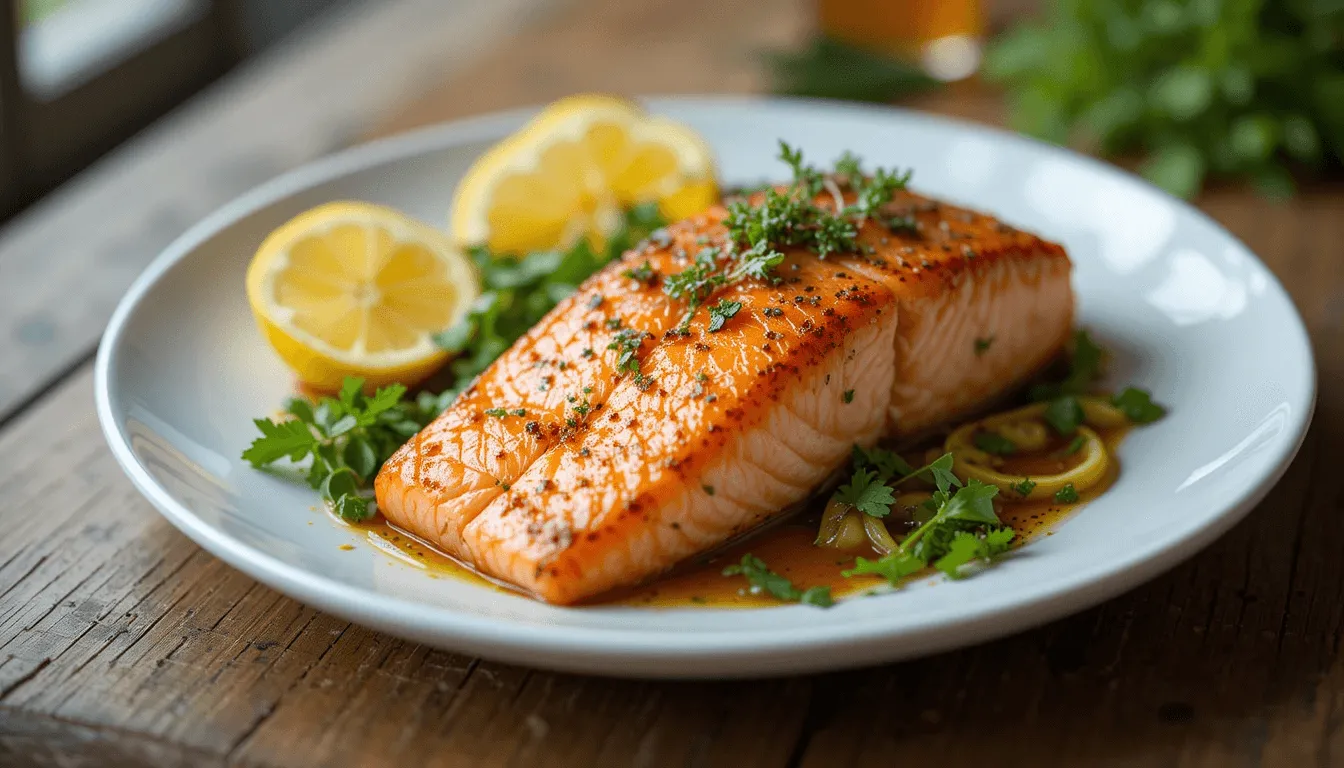Have you tried tasmanian salmon? It’s known for its unique taste and health perks. It’s perfect for many dishes, from easy recipes to fancy meals. You can make lots of tasty tasmanian salmon dishes that you’ll love.
This guide will show you how to make amazing tasmanian salmon dishes. You’ll learn different recipes and cooking ways to highlight its flavor. Whether you’re an expert chef or just starting, you’ll get ideas to make dishes that wow everyone.
Table of contents
Understanding Tasmanian Salmon: What Makes It Special
When picking the best salmon, think about tasmanian salmon. Tasmania’s clean waters make it perfect for salmon farming. This results in a top-quality product. Tasmanian salmon is also packed with protein and omega-3 fatty acids.
The sustainable farming in Tasmania is key. It means the salmon is raised with little harm to the environment. This method keeps the natural habitat safe and makes the salmon healthier and tastier. Here’s why tasmanian salmon stands out:
- High-quality feed boosts the salmon’s nutritional value.
- Strict farming rules protect the fish and the environment.
- A focus on sustainable farming cuts down waste and carbon footprint.
Choosing tasmanian salmon means you get a tasty and healthy meal. Plus, you support sustainable farming that protects our planet. With its clean waters, nutritional benefits, and eco-friendly farming, tasmanian salmon is a great choice for anyone.
Selecting the Perfect Tasmanian Salmon Fillet
Choosing the right tasmanian salmon fillet is important. You want the best quality. There are different types, like wild-caught and farmed salmon. It’s key to know what to look for.
Freshness is a must. Check the fillet’s color, smell, and texture. A fresh one should be vibrant pink, have a mild smell, and feel firm.
Here are some tips for picking the right salmon:
- Origin: Choose tasmanian salmon from sustainable sources and reputable farms or fisheries.
- Quality: Look at the fillet’s appearance, smell, and texture. A good one should be vibrant, smell mild, and feel firm.
- Price: While price isn’t everything, be cautious of very cheap options. They might be of lower quality or farmed badly.
By considering these points and inspecting the salmon, you’ll find the perfect one. Remember,
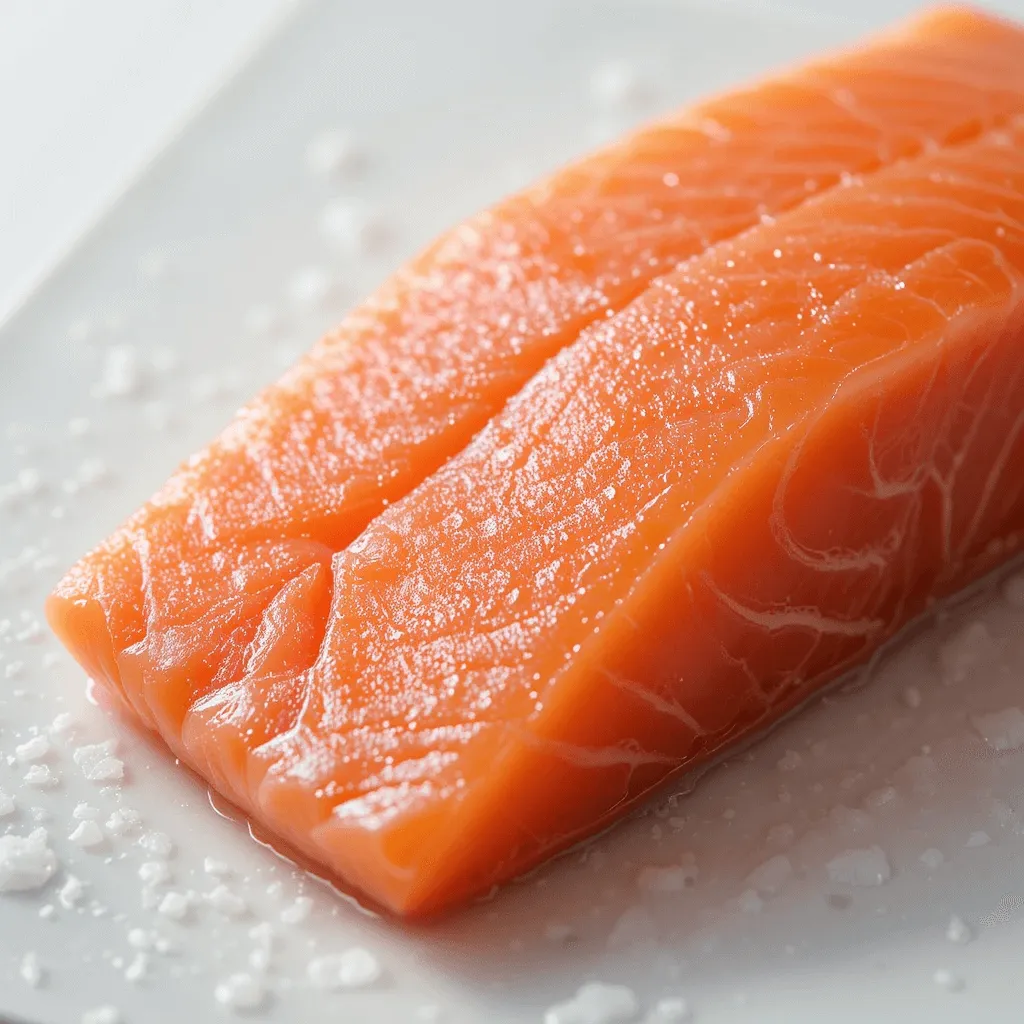
Essential Kitchen Tools for Salmon Preparation
Preparing Tasmanian salmon needs the right kitchen tools. You’ll need a sharp fillet knife, tongs, and a spatula to handle the fish carefully. A large skillet or sauté pan is also key for even cooking.
Proper storage is vital to keep your salmon fresh. Use airtight containers or zip-top bags. This keeps your salmon fresh longer and helps organize your kitchen.
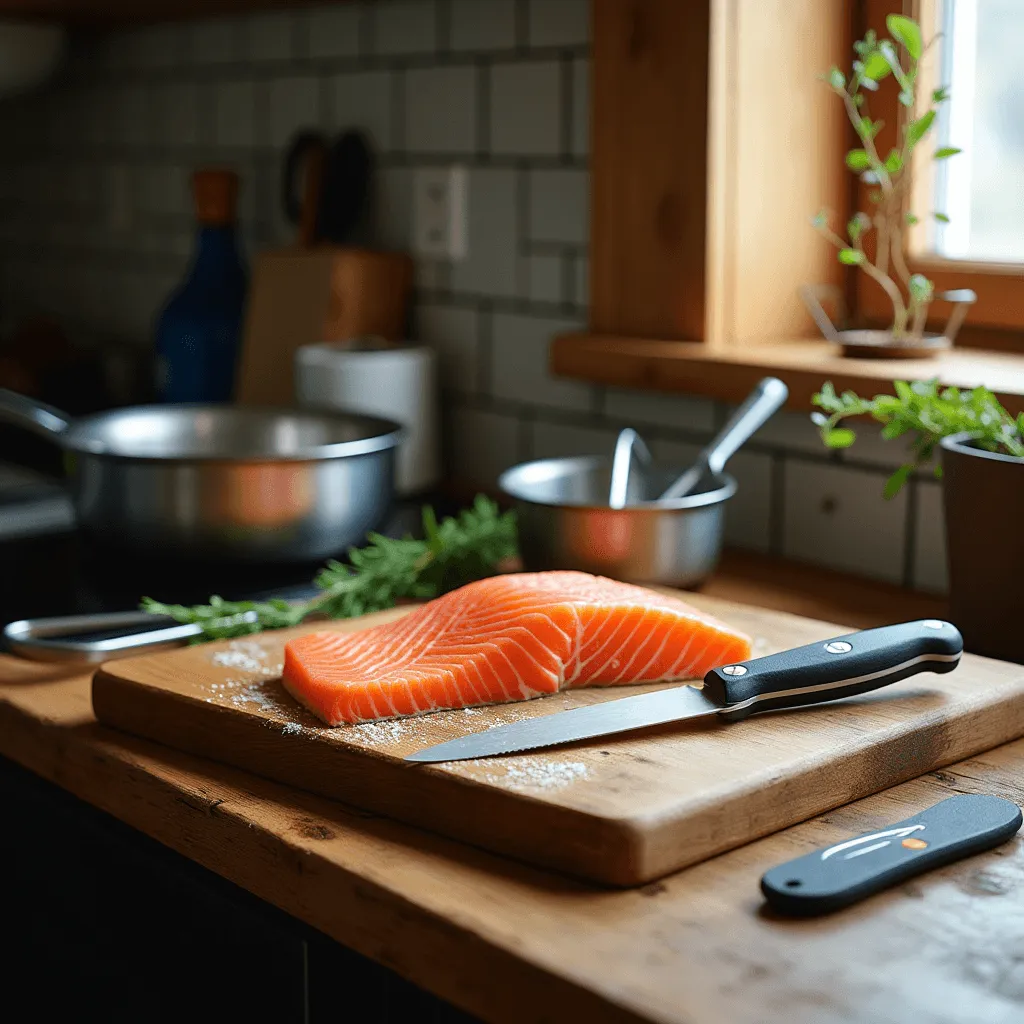
Other must-haves include a cutting board, a chef’s knife, and kitchen shears. These tools make preparing salmon fillets easy and precise. With the right tools, you can cook delicious and healthy salmon dishes with confidence.
Here are some must-have kitchen tools for salmon preparation:
- Sharp fillet knife
- Tongs
- Spatula
- Large skillet or sauté pan
- Airtight containers or zip-top bags
Basic Preparation Techniques
Preparing Tasmanian salmon is all about basic preparation. You’ll need to scale, gut, and fillet the fish first. You can do this at home with the right tools or have your fishmonger do it for you. After filleting, you can choose how to cook it, like baking, grilling, or pan-frying.
There are many cooking techniques to pick from. Baking is good for cooking without extra oil. Grilling adds a smoky taste. Pan-frying gives a crispy outside and a tender inside. Always cook the salmon to the right temperature for safety.
Here are some tips for preparing Tasmanian salmon:
- Always handle the fish gently to avoid damaging the flesh
- Pat the fish dry with a paper towel before cooking to remove excess moisture
- Don’t overcook the salmon, as it can become dry and tough

By using these basic preparation and cooking techniques, you can make tasty and healthy meals with Tasmanian salmon. Always remember to prioritize food safety and handle the fish with care for the best results.
The Best Tasmanian Salmon Recipes Australia Has to Offer
Australia has a wide range of tasmanian salmon recipes. You can choose from pan-seared, grilled, or baked. Each method highlights the salmon’s unique taste and texture.
In Australia, tasmanian salmon is a favorite in both restaurants and homes. You can make classic pan-seared dishes to enjoy the salmon’s natural flavor. Or, try grilled recipes for a smoky taste. Baked dishes are also popular, as they let you mix in many flavors and ingredients.
- Grilled salmon with lemon and herbs
- Pan-seared salmon with garlic and ginger
- Baked salmon with asian-inspired glaze
These recipes are tasty and simple to make. By trying different cooking methods and ingredients, you can make your own tasmanian salmon dishes. This way, you can show off Australia’s culinary best.
Marinades and Seasonings for Tasmanian Salmon
Preparing Tasmanian salmon can be a breeze with the right marinades and seasonings. You can pick from soy sauce, lemon juice, or olive oil. Each one brings a special flavor to your Tasmanian salmon.
Here are some seasonings and marinades to try:
- Lemon pepper seasonings for a bright, citrusy flavor
- Dill and garlic marinades for a classic, herby taste
- Asian-inspired marinades with soy sauce and ginger for a savory, umami flavor
It’s important to balance your marinades and seasonings. This way, you won’t overpower the Tasmanian salmon‘s natural taste. A bit of experimentation will help you find the perfect mix.
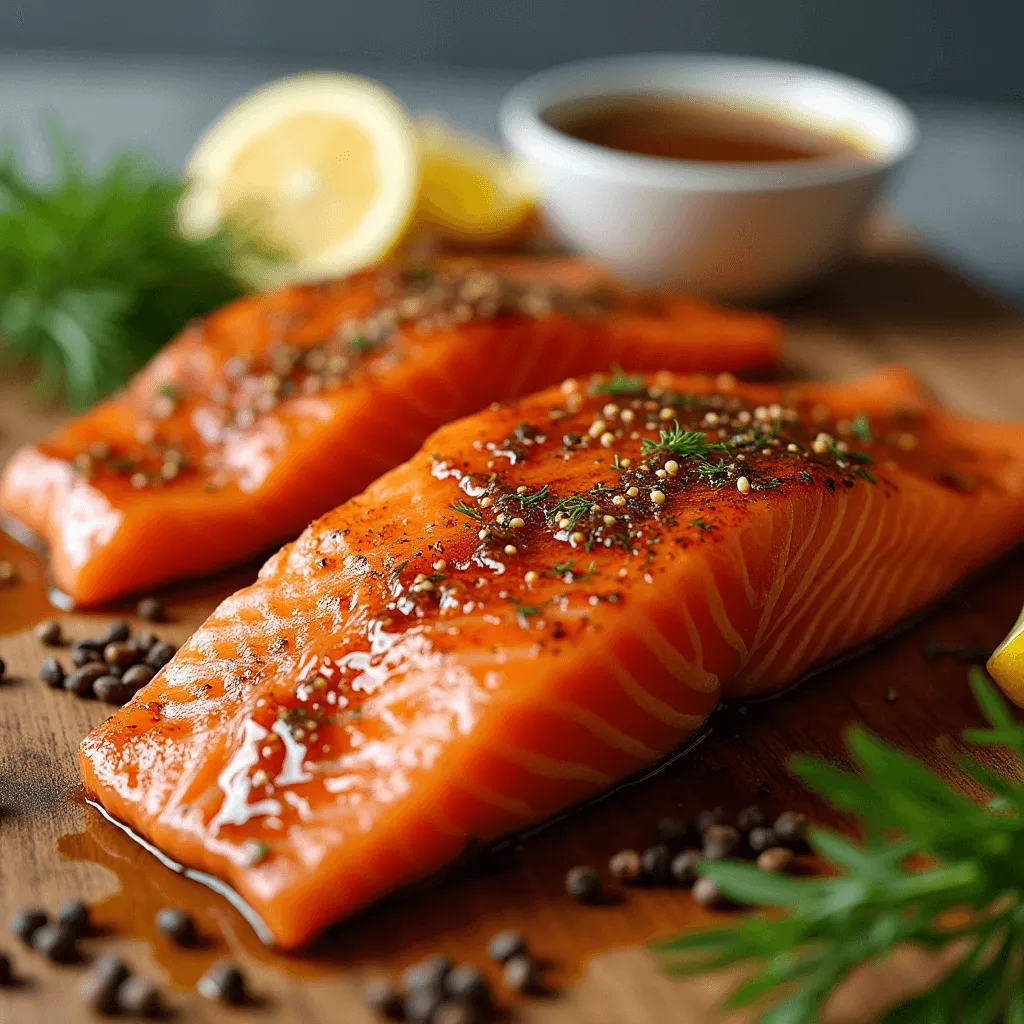
Trying out different marinades and seasonings can lead to many tasty Tasmanian salmon dishes. These dishes are sure to wow your family and friends. So, don’t hesitate to be creative and discover your favorite ways to cook this amazing ingredient.
Pairing Your Salmon: Side Dishes and Accompaniments
Enjoying Tasmanian salmon is even better with the right side dishes and accompaniments. Try pairing it with vegetable pairings like roasted asparagus, grilled bell peppers, or sautéed spinach. These add color and flavor to your meal.
For a base, consider grain options like quinoa, brown rice, or whole wheat bread. They soak up the salmon’s juices, making each bite enjoyable. For a treat, try creamy mashed potatoes or roasted sweet potatoes as side dishes.
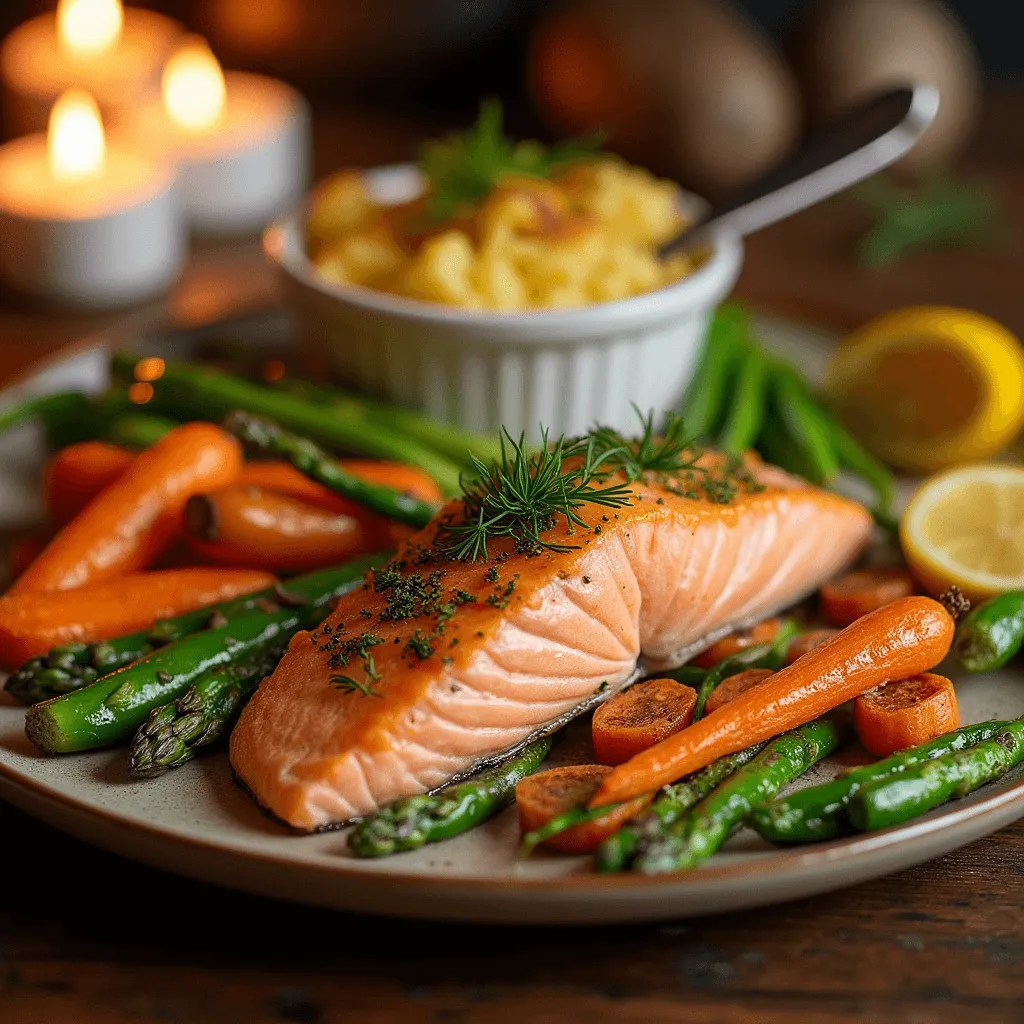
Don’t forget to choose a wine that pairs well with Tasmanian salmon. A dry white wine like Sauvignon Blanc or Pinot Grigio complements its flavor. A rich red wine like Pinot Noir can also enhance your meal. Some great wine recommendations include:
- Grüner Veltliner
- Albariño
- Riesling
By trying these side dishes, accompaniments, and wine recommendations, you can make a delicious meal. Whether you like simple vegetable pairings or more complex grain options, the goal is to find the perfect flavor balance.
Advanced Cooking Methods for Restaurant-Quality Results
To get restaurant-quality tasmanian salmon, try sous vide cooking, smoking, or curing. These methods need practice but are worth it. Sous vide cooking lets you control the temperature exactly, so your salmon is perfect.
Here are some advanced cooking methods you can try:
- Sous vide cooking: This method involves sealing the tasmanian salmon in a bag and cooking it in a water bath at a precise temperature.
- Smoking: This method adds a rich, smoky flavor to the tasmanian salmon and can be done using a smoker or a charcoal grill.
- Curing: This method involves applying a cure to the tasmanian salmon to draw out moisture and add flavor.
Mastering these advanced cooking methods lets you make dishes with tasmanian salmon that will wow your loved ones.
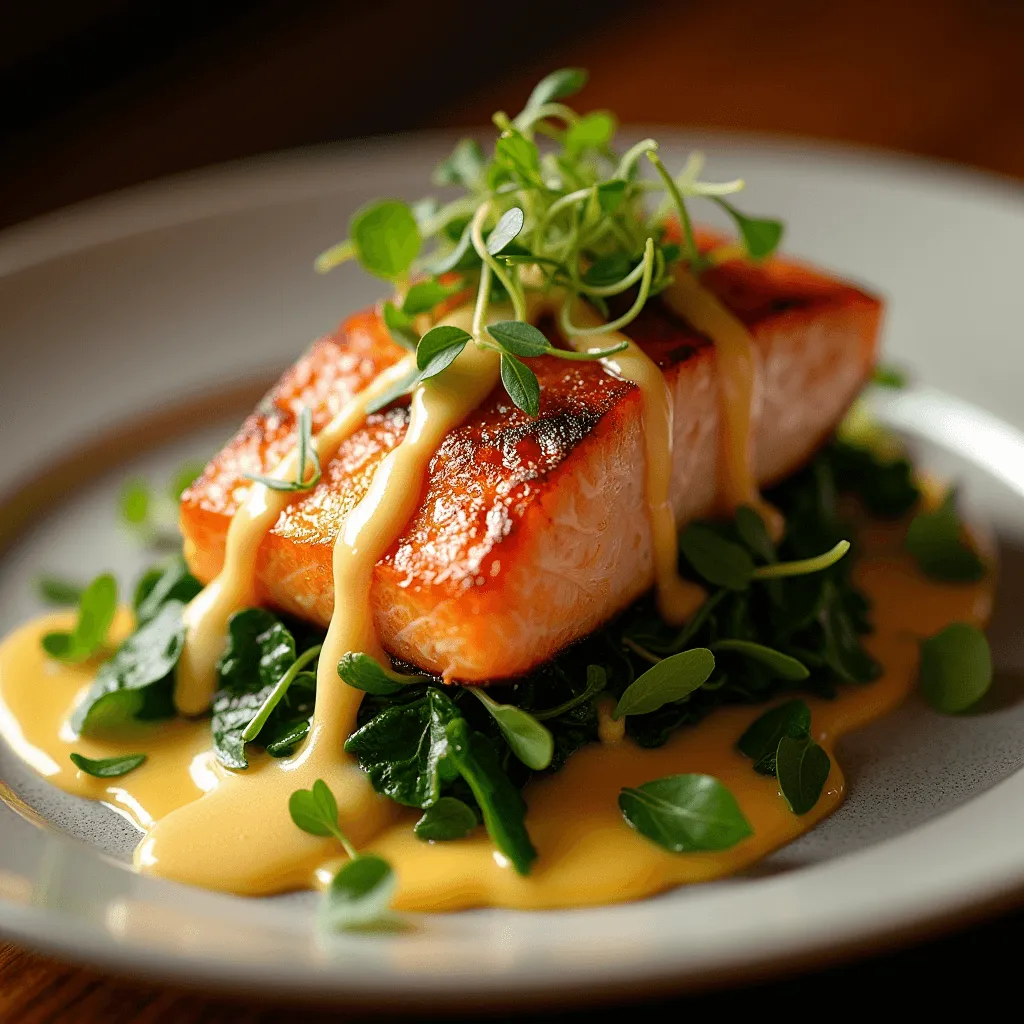
Tips for Perfectly Cooked Salmon Every Time
Cooking salmon can be tricky, but with the right tips, you can get it just right. Understanding temperature control is key. It helps you avoid mistakes like overcooking or undercooking.
One common mistake is overcooking, which makes salmon dry and tasteless. To avoid this, follow temperature guidelines and chef tips. Using a meat thermometer is a chef secret that helps you cook it perfectly.
- Use fresh and high-quality ingredients to ensure the best flavor and texture.
- Don’t overcrowd the pan, as this can lead to uneven cooking.
- Let the salmon rest for a few minutes before serving to allow the juices to redistribute.
By following these tips and guidelines, you can cook salmon perfectly every time. Always choose fresh ingredients and try new recipes and chef secrets to improve your cooking.
Storing and Freezing Your Tasmanian Salmon
Storing and freezing Tasmanian salmon right is key to keeping it fresh. You can store it in the fridge at 32°F to 40°F (0°C to 4°C) for up to two days. This helps you enjoy it for longer.
To store it longer, freezing is best. Freeze it at 0°F (-18°C) or below for up to six months. Wrap it tightly in plastic or foil and put it in a freezer-safe bag to avoid freezer burn. Vacuum-sealing is also great, as it keeps air out and stops bacteria growth.
Here are some tips for storing and freezing Tasmanian salmon:
- Store Tasmanian salmon in a covered container to prevent moisture and other flavors from affecting its quality.
- Label and date the container or bag so you can easily identify the contents and how long it’s been stored.
- Freeze Tasmanian salmon as soon as possible after purchase to maintain its freshness.
Follow these tips to enjoy your Tasmanian salmon for a longer time. Always handle and store it safely to avoid foodborne illness.
Health Benefits and Dietary Considerations
Adding Tasmanian salmon to your meals can be very beneficial. It’s packed with omega-3 fatty acids, which are great for your heart and brain.
Here are some key health benefits of eating Tasmanian salmon:
- Reduced inflammation
- Improved heart health
- Support for brain function and development
Tasmanian salmon is also high in protein benefits. This makes it perfect for those who want to eat more protein. It’s also a low-mercury fish, which is safe for pregnant women and kids.
To get the most out of Tasmanian salmon, eat it as part of a balanced diet. This way, you can enjoy its protein benefits and omega-3 while considering any dietary restrictions you might have.
Conclusion
Tasmanian salmon is a standout seafood choice that makes any meal better. You’ve learned about its unique qualities and how to prepare it. Now, you can make restaurant-quality dishes at home. Try different marinades, seasonings, and cooking methods to find your favorites.
Whether you’re searing, grilling, or baking salmon, this guide has you covered. Tasmanian salmon is not only delicious but also healthy and sustainable. It’s perfect for anyone who loves cooking and eating well.
Keep exploring Tasmanian salmon and share your creations with others. Show your friends and family the amazing dishes you can make. Enjoy the joy of cooking and serving up incredible Tasmanian salmon in your kitchen.
FAQ
What makes Tasmanian salmon so special?
Tasmanian salmon is known for its top-notch quality. This is thanks to Tasmania’s clean, pristine waters. These waters are perfect for salmon farming, making the salmon both tasty and healthy.
What are the nutritional benefits of Tasmanian salmon?
Tasmanian salmon is packed with omega-3 fatty acids, protein, and other nutrients. It’s great for your heart and can help reduce inflammation. Eating it regularly can improve your overall health.
How do I select the perfect Tasmanian salmon fillet?
Look for a fillet that’s vibrant and firm. Avoid any that seem dry or off-color. Choose between wild-caught or farmed salmon based on what you prefer.
What kitchen tools are essential for preparing Tasmanian salmon?
You’ll need a sharp knife, kitchen shears, and tongs. A thermometer is key to cooking it right. Use a heavy skillet or baking sheet for cooking.
What are some of the best Tasmanian salmon recipes in Australia?
Australia has many tasty Tasmanian salmon recipes. Try pan-seared, grilled kebabs, or baked with lemon and herbs. These recipes show off the salmon’s amazing flavor.
How can I perfectly cook Tasmanian salmon every time?
Cook it to 145°F (63°C) for medium-rare. Don’t overcook it to avoid dryness. Let it rest for a few minutes before serving to keep it juicy.
What are the health benefits of incorporating Tasmanian salmon into my diet?
Tasmanian salmon is full of omega-3s, good for your heart and brain. It’s also a great source of protein. It’s perfect for a healthy diet, including gluten-free or low-carb options.

